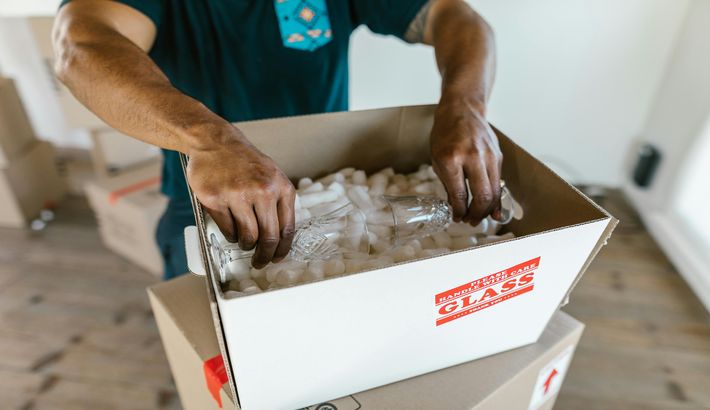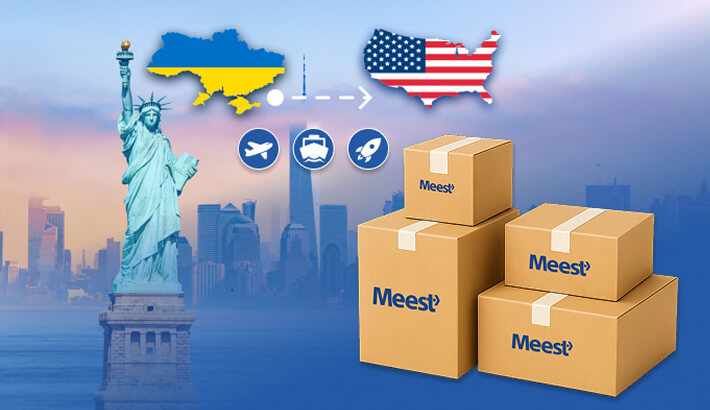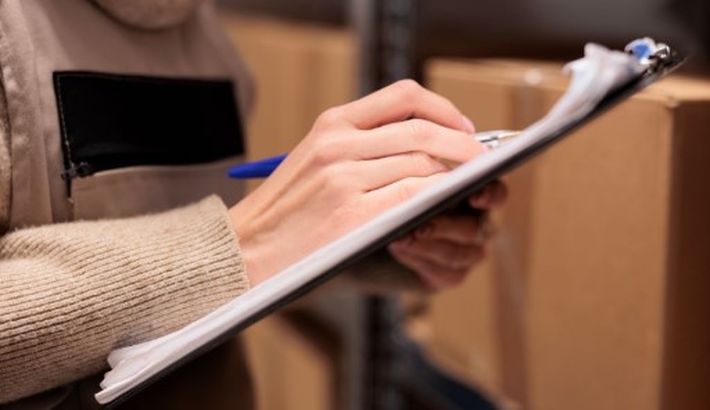


4 Easy Tips to Pack Fragile Items for International Shipping
Selling glassware, electronics, ceramics, decor, or even jewelry has one thing in common. Those are often fragile items that can be easily damaged during shipping. Delivering them intact domestically is tough, but sending them overseas is an even bigger challenge. Yes, many leading delivery services offer insurance that might help cover the loss, but they will not compensate for the reputational damage a dissatisfied customer can cause.
Fortunately, there is a possibility to minimize damage in transit and avoid an unpleasant experience for all the parties, from the customer to you and the shipping company. Another excellent piece of news is that this solution depends on you for the major part.
The solution is a reliable packaging of fragile items suitable for international shipping — you need to follow only those four effective tips mentioned below to pack your goods like a pro. Despite being relatively simple, they have been tested by multiple delivery services and have proven their effectiveness. Therefore, we can confidently recommend using them whenever you have a fragile object for shipping.
Select Suitable Materials for Your Packaging
Whenever you are shipping fragile items overseas, do not hesitate to be overcautious and selective in everything that is related to packing. Materials and their quality matter a lot. Their importance is emphasized by many reliable delivery services that know how to ship fragile items to ensure damage-free delivery, and Meest USA is no exception. Find useful tips on external and internal packing below.
External Packing
Frankly, it is all about a sturdy box that will protect your objects during shipping. Often, delivery services have packages of various sizes that can provide an easy fit for shipped objects. If you decide to find such a carton packaging yourself and pack your goods, consider the following:
- make sure that the selected box has a double-wall or tri-wall construction, as it is critical for fragile goods;
- do not reuse old carton packages, as their rigidity might not be as good as it should be;
- ensure the quality of materials by looking for a manufacturer's stamp on a box;
- choose the right boxing size, as under-filled ones may collapse and over-filled ones may burst.
The size of the box also matters, as many shipping companies determine the cost of delivery based on dimensional weight. To avoid overpaying, never choose a box that is significantly bigger than the shipped goods.
Internal Packing
Unless your goods do not have strong packaging and are kept loose, you should add internal packing yourself. For internal protection, use bubble wrap, foam sheets, air pillows, or packing peanuts. Keep in mind that each material serves a purpose, namely:
- bubble wrap provides cushions impact;
- foam sheets prevent scratches;
- air pillows fill voids without adding weight.
For especially delicate objects like glassware or electronics, consider molded inserts or custom-cut foam for a perfect fit.
The combination of proper external and internal packing is key to damage-free delivery. As soon as you follow both, you will have superior protection and have no reason to worry about breakage or damage to the shipped goods. Your parcel will survive safely even the roughest handling on the way from the United States to Europe.
Follow the Packing Techniques
Even when you have selected the best materials, they are not effective without proper techniques used when packing fragile items for shipping. Here is a step-by-step guide to ensure it is done correctly and reliably:
- Start by reinforcing the bottom of your package. You can do this with multiple layers of tape. Also, add a cushioning layer (like crumpled paper or foam) before placing your item inside.
- Wrap each item individually. Use at least 2–3 inches of padding around all sides, including the top and bottom, to ensure that two fragile objects do not touch each other.
- Place heavier items at the bottom and lighter ones on top. If shipping multiple items, use dividers or cardboard inserts to prevent them from colliding.
- Remember about the 6 cm rule. It means you need to place the shipped items in the middle of the box. Ideally, any object should be 6cm away from any wall. Knowing this rule is also beneficial when you need to select the perfect packaging for your parcel.
- Add extra padding to those vulnerable areas if you want to ship items with irregular shapes or protruding parts.
- Use soft tape or wrap them separately if your items have lids or detachable components. This way, you can avoid internal damage.
How to know that you have done a good job with packing? When shipping fragile items, you should not hear any movements when you shake a box. A silent package is a safe package in this context.
Use the Box-in-Box Method for Extra Protection
This one is a perfect solution if you are wondering how to pack fragile items for shipping when those are high-priced objects or goods that are easily broken. It is proven that your parcel has superior protection in this way. Here is how this packing option can be brought to life:
- wrap your item thoroughly and place it in a smaller inner box with at least 2 inches (6cm) of cushioning on all sides;
- seal the inner box and place it inside a larger outer box, and do not forget to surround it with material like foam, air pillows, or packing peanuts;
- seal the outer box and label it as usual.
This double-layered approach creates an anti-shock buffer zone that provides excellent protection against drops, compression, and vibration. Therefore, you might not be worried about the improper handling of your parcel.
Ensure the boxes that you have selected are sturdy and undamaged. The outer package should be at least 5–6 cm larger in each dimension than the inner one. This way you will get a perfect padding.
Add Accurate Labeling
Even though accurate labeling is one of the most overlooked steps when shipping fragile items internationally, it is certainly one of the critical ones. Having warning signs on a box can encourage those who handle the packages to move yours with extra care.
However, proper labeling is not just about slapping on a “Fragile” sticker on a package, but about communicating clearly with every handler. It is a hint for warehouse staff, customs officers, and last-mile couriers to carry this box gently, as there are breakable materials inside.
Different labels can warn those who handle parcels about the fragility of the objects inside. The most popular options are stamps mentioning:
- “Fragile”;
- “Handle with Care”;
- “This Side Up”.
Remember to place these on multiple sides of the box. Ideally, the top, front, and two adjacent sides of the package should contain such warnings. Use bright-colored labels or pre-printed tape to draw attention. If your goods must remain upright (like liquids, electronics, or artwork), directional arrows are essential. They help prevent mishandling during loading and unloading.
Yet labeling is not only a warning about fragility. It is also about this piece of paper with the information about the sender and the recipient, as well as the documentation required at customs. If those are not added, damaged, or lost, there is a risk that a parcel will never arrive at the doorstep of a recipient. To avoid such an issue, we have prepared DOs and DON’Ts about labeling.
DOs for Accurate Labeling:
- use clear, printed labels with the recipient’s full name, address, and contact number;
- use waterproof tape or label sleeves to protect a label against smudging or moisture damage;
- include a duplicate of a shipping label inside the box in case the outer label is lost;
- place labels on the flattest surface, away from seams or corners, to ensure better visibility and scanning.
DON’Ts for Accurate Labeling:
- don’t handwrite labels unless necessary, as illegible writing can cause delays or misdelivery;
- don’t place labels over seams, tape, or box edges, where they can peel off or be damaged;
- don’t forget directional arrows if your item must remain upright during transit;
- don’t rely on branded labeling of packaging alone.
Remember these the next time you need to send a parcel overseas, as these easy-to-follow pieces of advice can help you avoid unpleasant issues with your package in the shipping process.
Conclusion
Now that you know how to pack fragile items, you can agree that international shipping doesn’t have to be stressful. Still, it requires the right mix of materials, techniques, and attention to detail.
Selecting sturdy packaging alone can decrease the possibility of damage. Add proper internal cushioning and clear labeling to this, and you will guarantee yourself a stress-free delivery without constant worries about the integrity of the items inside. Especially if those are not just fragile, but also high-value ones. Each tip gives an extra layer of protection, ensuring your item can withstand the bumps, drops, and climate shifts in transit or last-mile delivery.
Proper packaging also saves time, money, and frustration by avoiding returns, insurance claims, or replacement costs. Take a few extra minutes to reinforce that box, double-check your filler, and apply those “Fragile” labels with intention.

















